Hot flashes are mostly spontaneous attacks of intense heat sensations or heat waves that affect the body even though the outside temperature is unchanged. Hot flashes are most common in menopausal women. However, some mature men also suffer from this symptom. Hot flashes are often accompanied by sweats.
What are hot flashes?

Hot flashes are most common during female menopause. Not all women suffer from it. Why some women do not have hot flashes at all during menopause is not understood. But there is good news: there are a lot of things that can be done about them.
Most affected women feel hot flashes first in the chest area. You feel uncomfortable heat and the skin turns red. The heat rises from the chest to the throat, neck, head and then spreads over the entire body.
The heart beats faster than usual. Together with the hot flashes, the women affected tend to be irritable and particularly sensitive. Other symptoms include sweating. After the "hot flashes", as the hot flashes are also called, the person concerned becomes cold or even chills.
Hot flashes occur especially in the evening or at night. Either hot flashes wake up those affected and do not let them go back to sleep, or in the morning the whole nightgown including bed linen is soaked through with sweat.
causes
So where do the hot flashes come from? During the menopause, hormone levels fluctuate greatly. Among other things, this leads to the fact that the center in the brain that is responsible for temperature control is not properly balanced. It especially goes crazy when your estrogen levels suddenly drop. The person concerned feels overheating and the blood in the body is pressed into the skin to cool it down.
The temperature of the body should also be reduced by breaking a sweat. That is why those affected also freeze after the hot flash. Such a hot flash usually lasts a minute, sometimes up to five and in rare cases it lasts half an hour. The frequency with which hot flashes occur also varies from woman to woman, from a few times a week to a few times an hour. The increasing palpitation during the heat attack comes from the stress hormone adrenaline. It is also poured out to cool the body down.
You can find your medication here
➔ Medicines against hot flashes and menopauseDiseases with this symptom
- Menopause
- allergy
- Obesity
- Carcinoid
- Hyperthyroidism
- Diabetes mellitus
Complications
Hot flashes are a common symptom in women when they enter menopause (climacteric). The body enters into a reversal of hormones and will take a few years to get used to the lack of estrogen and progesterone. The heart is racing at that moment and the blood vessels are wide open, so that the head turns red. There is also strong perspiration.
In itself, the hormonal change is a natural process and occurs in every woman from 40 to 50 years of age and accordingly this has no further serious consequences, as it is only a short-term symptom. However, the hot flashes occur mainly during sleep, so that there may be a lack of sleep. The strong sweat production that results is usually a great psychological burden for those affected.
Hot flashes can also occur in connection with other diseases. Therefore, if they occur regardless of the menopause, they should be clarified by a doctor. An overactive thyroid can also cause hot flashes. Too many thyroid hormones can lead to thyrotoxic crisis, which, in addition to dizziness and drowsiness, can lead to coma and death. Diabetes can also cause hot flashes. If left untreated, diabetes can lead to various complications such as blindness, sensory disorders or kidney failure.
When should you go to the doctor?
If hot flashes are due to an increased consumption of coffee, tea, nicotine, alcohol or certain spices, these are mostly harmless and can easily be avoided by not using these stimulants. Relapsing hot flashes are often caused by menopause and are usually associated with only moderate symptoms that do not require medical treatment.
Relapsing hot flashes not only affect women after they have missed their menstruation. Hot flashes can also be observed in men due to a drop in male sex hormone (testosterone) with age. If these relapses are so pronounced that everyday life and quality of life are significantly restricted, a doctor should be consulted. In addition, hot flashes should always be clarified by a doctor if they are not related to the hormonal change during the menopause.
Possible diseases such as diabetes, high blood pressure, an underactive thyroid, tumors or allergies must be excluded as possible causes. A doctor should also be consulted if drug-induced hot flashes are suspected so that the medication can be adjusted if necessary.
Doctors & therapists in your area
Treatment & Therapy
Even if hot flashes and menopause are very stressful for women - something can be done about it. For many it is even an occasion to rethink their previous lifestyle. For many it is becoming more and more important to do something good for yourself and to pay more attention to yourself and your own needs.
Often it is nothing big at all, but there are things that one has wanted to change for a long time: whether it is to eat healthier, drink less alcohol or quit smoking. Getting more exercise often goes a long way toward getting hot flashes under control.
But there are also many things you can do when the heat becomes acute. For example, those affected should take care to keep rooms cool and not overheat, otherwise hot flashes are promoted.
Home remedies ↵ for hot flashes Affected should dress according to the onion principle, i.e. several layers on top of each other so that individual parts can be removed if necessary. The clothing should generally be loose and be made of natural materials. It is worthwhile to have a spare nightgown and, if necessary, a spare blanket ready. If you get sweaty again at night, you can switch quickly.
Outlook & forecast
If the hot flashes are menopausal symptoms, they can, in unfavorable cases, last up to ten years. However, there are now various treatment options that at least alleviate these side effects of climacteric. In naturopathy, hot flashes and sweats are treated with tablets and tinctures that contain, for example, the extract of black cohosh. Preparations based on soy, red clover, sage, lady's mantle and yarrow can also help. The effectiveness of these agents has not been scientifically proven, but they have proven themselves many times in practice.
Physical therapies such as mud baths and Kneipp treatments can also help. These naturopathic methods generally do not lead to a complete disappearance of the hot flashes, but they can reduce them to a level that is tolerable for those affected.
Women who are not helped by these gentle methods can undergo hormone replacement therapy, which usually allows the hot flashes to subside quickly. However, the regular intake of hormones is associated with significant health risks. In particular, the risk of breast cancer, cardiovascular disease and thrombosis increases.
Hot flashes in men that can be traced back to a disturbed hormonal balance are usually successfully treated with testosterone.
Hot flashes, which are drug side effects, subside on their own after stopping the causative agent.
You can find your medication here
➔ Medicines against hot flashes and menopauseprevention
What can you do to prevent hot flashes? Those who exercise regularly in the fresh air generally suffer less from hot flashes. You shouldn't stress yourself too much, but allow yourself as much rest and relaxation as possible. Relaxation techniques such as yoga or meditation can be helpful.
Proper diet is an important aspect of preventing hot flashes. Basically you should avoid spicy foods and eat many foods with isoflavones, i.e. plant-based estrogens. These are contained in soy products, for example. In addition, isoflavones are found in many legumes such as peas, lentils, and beans.
Many women shy away from taking drugs or hormones. Herbs are often helpful. They contain phythohormones that work against hot flashes. These can be found in monk's pepper, rue or hops, for example.
You can do that yourself
Hot flashes can be very uncomfortable, especially for women, and severely limit their everyday lives. However, there are many methods of self-help for hot flashes that are easy to use.
As a rule, clothing should always be adapted to the current temperature. This can prevent a large part of hot flashes. It is advisable to wear items of clothing that can be easily changed. This mainly includes jackets and shirts. If the hot flashes occur, the patient can quickly remove these items of clothing. Clothing made from natural fibers helps dissipate heat and thus prevent unnecessary sweating.
Eating a healthy diet and generally healthy lifestyle also have positive effects on hot flashes. The patient should eat a lot of fruits and vegetables and avoid alcohol and cigarettes. Coffee should also be avoided. Spicy foods lead to excessive sweating in many people. This should be avoided in the case of hot flashes. For sleeping, cool rooms or the purchase of a fan are recommended. This can prevent unpleasant hot flashes at night. Stress exercises and yoga are equally good at combating symptoms and calming the body.

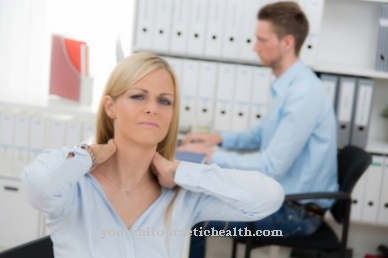
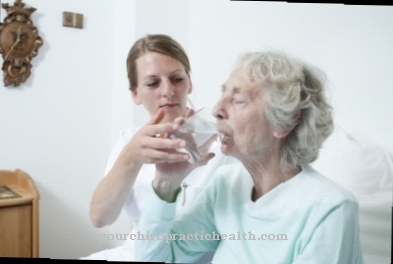
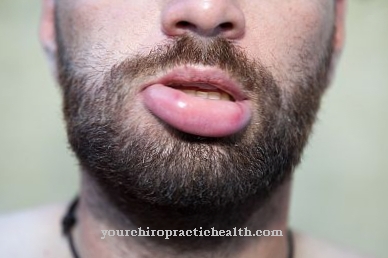
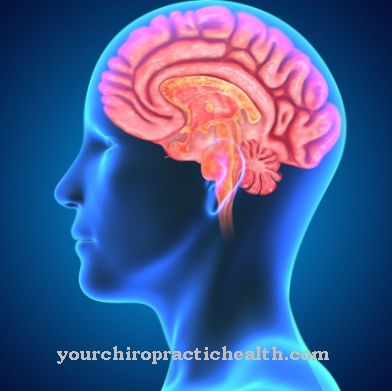

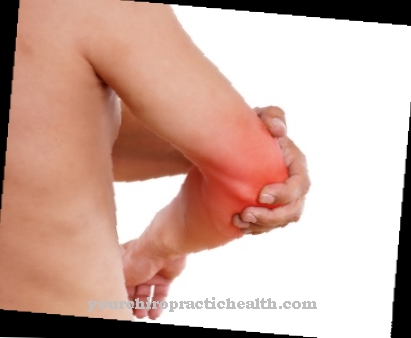






.jpg)

.jpg)
.jpg)











.jpg)